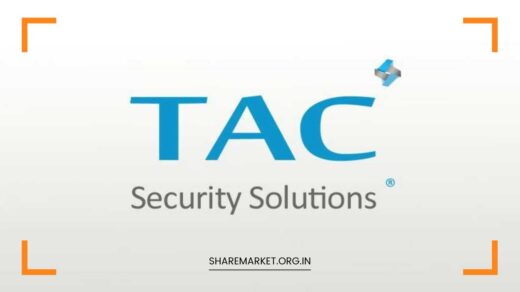Get a Guaranteed Income of Rs 2 Lakh Every Month

Guaranteed Income
Secure a Guaranteed Income of Rs 2 Lakh Every Month: A Comprehensive Guide to Retirement Planning
In today’s financial landscape, characterized by historically low interest rates, traditional debt instruments such as Fixed Deposits (FDs), Public Provident Fund (PPF),
Post Office Recurring Deposits (RDs), and Employee Provident Fund (EPF) are becoming increasingly inadequate for effective retirement planning.
These investment vehicles, once considered safe and reliable, are struggling to keep pace with inflation, which currently exceeds 6%. To secure a comfortable retirement, it’s crucial to explore alternative investment strategies that offer higher returns.
Equity-oriented investments, including equity mutual funds and stocks, can provide the necessary returns to not only match but potentially exceed inflation rates.
This article will guide you through the process of leveraging equity investments to build a retirement corpus that ensures a monthly income of Rs 2 lakh. We will explore the risks, required investments, and strategic planning needed to achieve this goal.
The Challenge of Low-Interest Rates
Understanding the Current Financial Climate
The current economic environment is characterized by exceptionally low interest rates. While low rates are beneficial for borrowing, they present significant challenges for those relying on fixed-income investments to fund their retirement.
Instruments such as FDs, PPFs, and EPFs typically offer modest returns, which can be inadequate for generating the income needed to sustain a comfortable lifestyle, especially given the rising cost of living.
Inflation and Its Impact
Inflation erodes the purchasing power of money over time. With the retail inflation rate currently above 6%, traditional debt instruments fail to provide returns that outstrip inflation.
For effective retirement planning, it’s essential to target investment options that offer returns exceeding the inflation rate.
Equity-oriented products, despite their higher risk, can offer these higher returns and serve as a viable solution to inflationary pressures.
The Role of Equity Investments
Why Equity Investments?
Equity investments, including stocks and equity mutual funds, have the potential to generate higher returns compared to traditional fixed-income instruments.
Historically, equity markets have delivered annual returns of 10-12%, which can significantly outpace inflation. This makes them an attractive option for building a retirement corpus that maintains purchasing power.
Risks Associated with Equity Investments
It is important to acknowledge that equity investments come with inherent risks. The stock market can be volatile, and short-term fluctuations can impact returns.
However, investment experts emphasize that staying invested in equity markets for the long term (typically 10 years or more) reduces risk and smooths out market volatility.
Long-term investment strategies can harness the power of compounding and provide substantial returns.
Calculating Future Income Needs
Current Income Requirements
At present, a retired couple might require approximately Rs 50,000 per month to live comfortably, assuming they own their home. This figure covers basic living expenses and provides a modest cushion for unforeseen costs.
Future Income Projections
To estimate future income needs, we must account for inflation. With an assumed annual inflation rate of 5%, the monthly requirement of Rs 50,000 today will increase to approximately Rs 1.65 lakh in 20 years.
This projection highlights the necessity of a robust investment strategy to build a retirement corpus that can support this level of income.
Strategic Investment Planning
Planning for Retirement at Age 60
If you are 40 years old and planning to retire at 60, you have a 20-year investment horizon to build your retirement corpus. The objective is to accumulate a substantial amount that will provide a steady monthly income after retirement.
Equity mutual funds are a recommended investment vehicle for this purpose due to their potential for higher returns.
Investment Strategy Using Equity Mutual Funds
To achieve a monthly income of Rs 1.65 lakh after retirement, you need to invest in equity mutual funds through a Systematic Investment Plan (SIP).
Assuming an average annual return of 12%, you would need to invest approximately Rs 40,434 every month through SIPs. This consistent investment will help you build a retirement corpus capable of meeting your future income needs.
Projected Growth and Withdrawals
Accumulating a Retirement Corpus
With a 12% annual return, your monthly SIP investments will grow significantly over 20 years. By investing Rs 40,434 every month, your corpus will accumulate to approximately Rs 4 crore. This corpus will be the foundation for your retirement income strategy.
Utilizing the Corpus for Monthly Withdrawals
Upon retirement, you can withdraw Rs 2 crore from your equity mutual fund corpus and invest it in safer, liquid funds or short-term debt mutual funds.
Using a Systematic Withdrawal Plan (SWP), you can withdraw Rs 1.65 lakh per month from these liquid funds.
The Rs 2 crore invested in liquid funds should be able to support your withdrawals for around 10 years, assuming an annual return of 4% on these investments and a 5% annual increase in withdrawals to account for inflation.
Post-Ten-Year Strategy
Growth of Remaining Equity Investments
After 10 years of withdrawals, the remaining Rs 2 crore invested in equity mutual funds is projected to grow to approximately Rs 6.52 crore. By the time you are 70, your monthly expenses are expected to rise to Rs 2.70 lakh due to inflation.
Reinvesting for Sustained Income
At age 70, reinvest the Rs 6.52 crore using a similar strategy to ensure continued income. If you continue to follow the SIP and SWP approach, your investments should provide sufficient funds to cover your increasing expenses.
By the time you turn 85, the remaining corpus in your liquid funds will be around Rs 2.33 crore.
Ensuring Longevity of Your Retirement Corpus
Planning for Extended Longevity
The remaining Rs 2.33 crore at age 85 should be sufficient to cover your expenses for the next five years. If you maintain a disciplined investment and withdrawal strategy, this amount will help you sustain your lifestyle even if you live beyond the average life expectancy of 90 years.
Adjusting for Future Needs
To ensure your retirement corpus lasts, periodically review and adjust your investment strategy and withdrawal plans based on changes in your expenses and market conditions. It is crucial to remain flexible and responsive to any changes in your financial situation or economic environment.
Final Remarks
Effective retirement planning in the current low-interest-rate environment requires a proactive approach and a shift towards equity-oriented investments.
By leveraging equity mutual funds and maintaining a disciplined investment strategy, you can build a substantial retirement corpus that provides a steady income of Rs 2 lakh per month.
This approach not only helps in outpacing inflation but also ensures financial stability throughout your retirement years.
Additional Considerations
Diversification and Risk Management
To mitigate risk, diversify your investments across various equity mutual funds and other asset classes. This diversification can help manage market volatility and enhance the stability of your returns.
Regularly review your investment portfolio to ensure it aligns with your risk tolerance and financial goals.
Consulting with Financial Advisors
Consider consulting with a financial advisor to tailor your investment strategy to your specific needs and goals.
Financial advisors can provide personalized advice, help with asset allocation, and offer insights into market trends that can impact your investment decisions.
Regular Monitoring and Adjustments
Regularly monitor your investments and make necessary adjustments based on market performance, changes in inflation rates, and your evolving financial needs.
Staying informed and proactive will help you stay on track to achieving your retirement income goals.
By following these guidelines and maintaining a long-term investment perspective, you can secure a comfortable and financially stable retirement, ensuring that your income needs are met well into your retirement years.

















